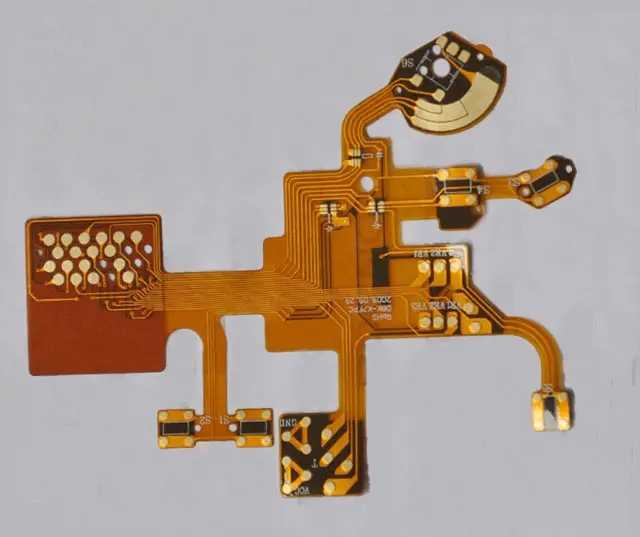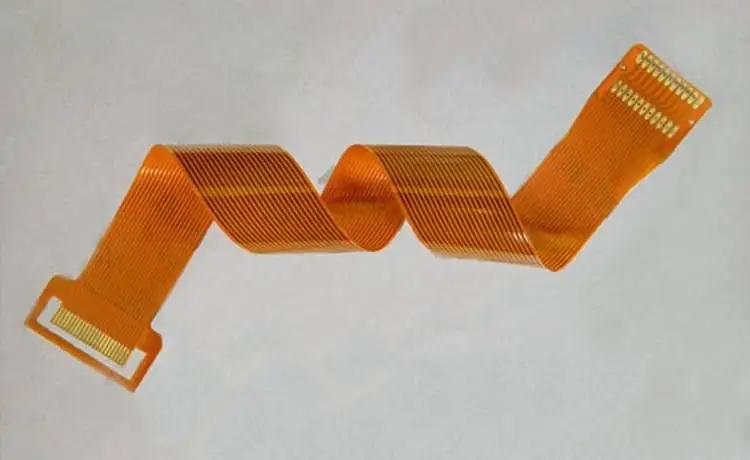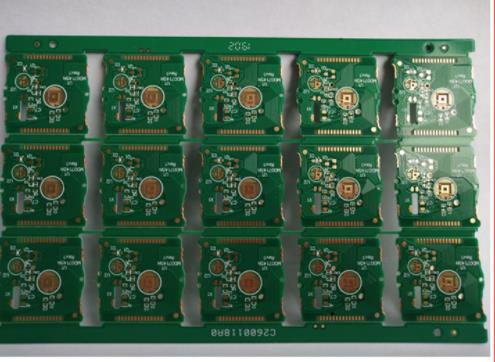
Composition Materials and Development PrOSPect of FPC Flexible Circuit Board
PCB manufacturers, PCB designers and PCBA manufacturers will explain the composition materials and development prospects of FPC flexible circuit boards
FPC flexible circuit board is one of the popular circuit board types to meet the requirements of flexible electronIC circuits. It is designed to replace the traditional wiring harness, and the Flexible circuit board can meet a variety of complex electronIC designs. Although the performance of flexible PCB depends on many factors, the main materials play a key role in it. What are the components of FPC flexible circuit board? In the structure of FPC flexible circuit, the materials consist of Flexible copper clad plate (FCCL), covering film, adhesive film, etc. Flexible copper clad laminate (FCCL): The common sheet films of flexible copper clad laminate are polyimide film (PI), polyester (PET), polyethylene naphthalate (PEN), liquid crystal display polymer (LCP) and other polymer plastic films. In FPC flexible circuit board, copper clad laminate mainly plays the role of conductivity, insulation layer and support point. Covering film: It is composed of organic chEMIcal plastic film and adhesive. The effect of the covering film is to maintain a part of the electrical conductor of the flexible power circuit that has already been carried out. The adhesive film has different types of plate film and adhesive, as well as specifications and models of thickness. Bonding film: It is formed by pouring adhesive on two or one sides of a substrate film. There is also a bonding film with or without a pure adhesive layer of the substrate. The bonding film has different adhesive types and thickness specifications. The adhesive film is used for bonding and insulation between layers of multilayer boards. Ordinary FPC flexible circuit board is mainly composed of two materials: base material and covering film. First of all, the base material is mainly composed of PI or PET+glue+copper junction. PI is a polyimide insulating resin material, which is characterized by high temperature resistance, good bending performance, good reliability of the products produced, more than twice the price of PET, and is the main material of FPC flexible circuit board. PET is a polyester insulating resin material, which is just opposite to PI. Generally, FPC manufacturers have rarely used it.

What is the difference between the base material, covering film and PI reinforcement of FPC soft board?
FPC flexible circuit board is a highly reliable and excellent flexible printed circuit board made of PI polyimide or polyester film. It has the characteristics of high wiring density, light weight, thin thickness and good bending performance. As a special engineering material, PI has been widely used in aviation, aerospace, microelectronics, nano, liquid crystal, separation membrane, laser and other fields. The long-term use temperature is - 200 ℃~426 ℃. PI polyimide is very common in FPC flexible circuit board. It exists in substrate, covering film and even reinforcement. Some people may be confused about this, so today let's discuss the difference between them? The functional differences between the base material, covering film and PI reinforcement of FPC flexible circuit board are as follows: 1. PI base material: the base material of FPC flexible circuit board is divided into adhesive base material and non adhesive base material. PI polyimide is essential for both adhesive and non adhesive substrates. 2. PI covering film: It is mainly used for circuit insulation. 3. PI reinforcement: It is usually applied to the back of FPC golden finger. PI stiffeners are used to increase the thickness and hardness of fingers for easy plugging.
The difference in thickness between the base material and the covering film of FPC flexible circuit board is as follows: 1. PI base material: 1/2mil and 1mil are common for PI in the base material, and the thickness can even reach 4mil and 5mil (DuPont non adhesive PI material). 2. PI covering film: There are two choices of PI thickness on the covering film, 1/2mil or 1mil. 3. PI reinforcement: The thickness of PI reinforcement can be selected according to customer needs, such as 0.075mm, 0.1mm, 0.125mm, 0.175mm, 0.2mm, 0.225mm, 0.25mm, etc.
Differences in color selection of the base material and covering film of FPC flexible circuit board: 1. PI base material: no color selection. 2. PI covering film: PI covering film has three colors: yellow, white and black. 3. PI reinforcement: It varies with the thickness, and the thicker the thickness, the darker the color. For example, 0.075mm PI reinforcement looks like brown, and 0.25mm PI reinforcement is closer to black.
FPC flexible circuit board is a printed circuit made of flexible insulating substrate, which has many advantages that hard printed circuit board does not have. It can bend, wind and fold freely, can be arranged arbitrarily according to the space layout requirements, and can move and expand freely in three-dimensional space, so as to achieve the integration of component assembly and wire connection; The volume and weight of electronic products can be greatly reduced by using FPC, which is suitable for the development of electronic products in the direction of high density, miniaturization and high reliability. Therefore, FPC has been widely used in aerospace, military, mobile communications, laptops, computer peripherals, PDAs, digital CAMeras and other fields or products; FPC also has the advantages of good heat dissipation and solderability, easy assembly and connection, and low comprehensive cost. The design of soft hard combination also makes up for the slight shortage of the flexible substrate in the component bearing capacity to a certain extent.
Application advantages and development prospects of FPC soft board?
With the upgrading of electronic products, FPC soft board, with its unique advantages, caters to the development trend of light, thin, short and SMAll electronic products, and plays an important role in the field of electronic information industry. FPC soft board is mainly used for the connection of electronic products. It exists as the medium of signal transmission and has high reliability and excellent flexibility. With the continuous promotion of information and intelligent construction, the MARKet demand for FPC soft board will also be growing. The demand for FPC soft boards in the electronic industry is growing. First, the excellent characteristics of FPC soft boards are suitable for the ultra-thin requirements of electronic products; Second, in the high frequency and high-speed transmission of the circuit, the reliability of FPC soft board is required to be high. Therefore, the market scale of FPC soft board in the electronic industry is constantly expanding. FPC soft board has the advantage of high wiring and assembly density, eliminating the connection of redundant flat wires; Good bending property, high flexibility and high reliability; Small volume, light weight and thin thickness; Circuit can be set, wiring layer and flexibility can be increased; SIMple structure, convenient installation and consistent installation. The application fields of FPC soft boards can be divided into three categories: smart phones, wearable devices and Automotive electronics. Applications on smart phones include battery module, display module, touch module, camera FPC, connection module, etc. A smart phone needs to carry 10-15 FPC soft boards. With the commercial use of 5G, the development of smart phones towards miniaturization and large screen, the rise of folding screen phones, etc., will increase the use of FPC soft boards. The demand for FPC soft boards in the smartphone field is on the rise. In addition to mobile phones, the automotive electronics market is also the main battlefield of FPC. The vehicle control systems, such as dashboard display, air quality, audio, display, sensors, etc., require high signal transmission volume and high reliability, so FPC begins to show its advantages. With the emergence of emerging electronic products, the market and use of FPC soft boards have also expanded. The upgrading of different types of electronic products will bring more considerable development prospects than traditional markets.
PCB manufacturers, PCB designers and PCBA manufacturers will explain the composition materials and development prospects of FPC flexible circuit boards.









